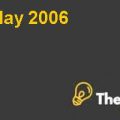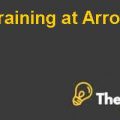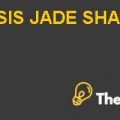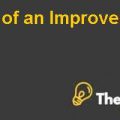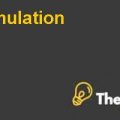
APOLLO TYRES LTD Case Solution
INTRODUCTION
This case provides information to analyze an investment decision and to reach a certain point where a decision regarding a potential investment can be made. Mr. Santanu, is an investor that short listed Apollo Tyres Ltd for a possible future investment, Apollo Tyres is headquartered in Gurgaon, India. Currently Apollo is India’s leading tyre manufacturer, they started their operations in 1976. Initially, they started their operations through entering into a technical collaboration with General Tyre International Company from United States, and set up its first plant at Perambra, Kerala. In 2011/2012 Indian tyre companies manufactured 125.4 million units of tyres. There is a strong replacement market and companies contribute in the total exports. Like all other big players, Apollo also pursued an aggressive strategy through acquiring companies in different regions to operate on an advanced level.
The Indian tyre industry within which Apollo operates is an 389 Billion INR Industry in terms of turnover. Apollo operates alongside its competitors Birla, Ceat, JK Tyres, and MRF. International players like Bridgestone and Goodyear are also operating in the Indian tyre industry. Over the last 10 years, the overall tire production in India has grown at a combined annual growth rate of 12.4%. The industry is capital intensive in nature and new players find it hard to break into the industry, capital intensity is one of the reason new entrants operate at lower level of production but usually make moderate profits in areas where top five companies of the Indian tire industry do not operate. Few big market players and a growing tyre replacement market also suggests high profits margins. Despite of potential opportunities in the market and favorable industry environment, Mr. Santanu wants to pursue with a detailed analysis of Apollo. He wants to invest in the companies that are currently undervalued but operating in a high growth market. In order to further asses this belief, he wants to value Apollo based on its free cash flows by incorporating future growth rates in the analysis.
Apollo Tyres demonstrated amixed performance in different areas, they showed a volatile gross profit. From 2007 to 2012, gross profit was 30.46% in 2007 and 31.4% in 2012. Between 2007 and 2012, the gross profit went on it’s lowest when gross profit was recorded at 28.93%. The reason behind such fall is probably the global crises of 2008 when the prices were increasing the international markets. All these factors contributed in the sudden drop of gross profits of Apollo Tyres. Usually the reason behind the fall in gross profit is the increase in prices of raw material and all other costs which are incurred in the sales. Apart from 2009, Apollo maintained its gross profit and in 2010, it touched the highest gross profit of 42% in the five years from 2007 to 2012.
Currently the Return On Capital Employed (ROCE) is lower if we compare the current ROCE of 20.29% with the preceding 4 years from 2007 to 2011. Otherwise the recent ROCE of Apollo was stable and the Apollo was generating significant profits on the base of its capital employed. If ROCE of last and current year is compared, it is quite evident that Apollo Tyres Ltd has maintained its ROCE, The figures are 21.02% in 2011 and 20% in 2012....................
This is just a sample partial case solution. Please place the order on the website to order your own originally done case solution.

